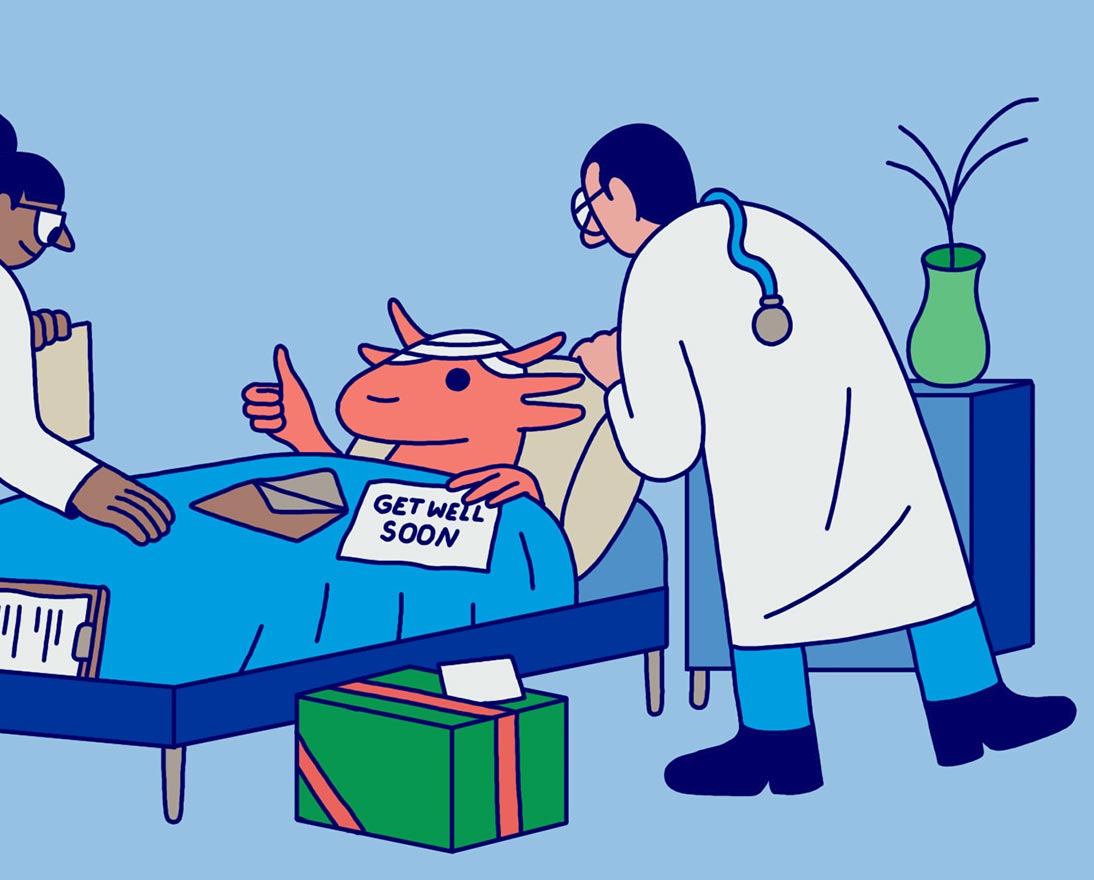The methane menace: a global environmental challenge that goes beyond cow farts
Climate resilienceArticleJanuary 9, 2024
Methane gas is responsible for about a third of the global rise in temperature to date. But can we really blame farting cows? Here we explain where methane comes from and how we can reduce its prevalence in the atmosphere.
It’s not every day that farting cows seize the global news agenda. But those methane-emitting flatulent beasts have managed to do it at three consecutive global climate change summits – the latest at COP28 in Dubai in December 2023.
At COP28, methane was under the spotlight. Responsible for about 30 percent of the planetary warming we see today, methane’s contribution to climate change is now being taken seriously. So seriously, that signatories to the Global Methane Pledge – totaling 155 countries, including the U.S. and the EU – unveiled USD 1 billion in new grant funding to meet their target of cutting methane emissions by at least 30 percent from 2020 levels by 2030.
With less fanfare, there was another announcement that recognized the role of cows in the production of methane: the launch of the Dairy Methane Action Alliance. Formed by many of the giants of the dairy industry, it plans to implement a “methane action plan” by the end of 2024.
Why methane emissions matter
Methane may not receive as much attention as carbon dioxide (CO2), but this colorless, odorless gas – made from carbon and hydrogen with the chemical formula CH4 – is one of the most damaging greenhouse gases.
“Individual molecules of methane have a greater warming effect than individual molecules of CO2,” explains John Scott, Head of Sustainability Risk at Zurich Insurance Group. “In fact, methane is more than 28 times as potent as CO2 at trapping heat in the atmosphere. Thankfully, there is less methane than CO2 in the atmosphere and it has a much shorter atmospheric lifetime – around 12 years compared with centuries for CO2.”
This shorter atmospheric lifetime means that any reduction of methane emissions would have a near-immediate impact. For instance, if the Global Methane Pledge does cut methane emissions by 30 percent by 2030, it could eliminate over 0.2˚C of warming by 2050. (It would also improve air quality as methane contributes to the formation of ground level ozone, a dangerous pollutant.)
But it won’t be easy as methane concentrations in the atmosphere have more than doubled over the past two centuries, largely due to human-related activities.
So given that methane is an important and growing contributor to climate change, it’s time everyone realized how it is emitted in the first place.
Natural sources of methane
Around 40 percent of the world’s methane emissions come from natural sources. Three quarters of these natural emissions are created in wetlands, where the water-logged soils and the plant and animal species that have evolved to live in them create an oxygen-poor environment that encourages methane production.
The remaining 25 percent of natural methane emissions are produced by a combination of volcanic activity, wildfires, permafrost, ocean dwelling microbes and – proving that cows aren’t the only culprits from the animal kingdom – termite farts.
Human (and cow) sources of methane
The majority of methane emissions (60 percent) come from human activity, also known as anthropogenic emissions. The largest anthropogenic source is agriculture with the majority coming from livestock – including from both manure and gastroenteric release. A single cow can produce 70-120kg of methane a year. But don’t blame the farts. Most of it is released as burps – though some certainly escapes out of the rear end, too!
To solve this problem, one business offers a feed additive that claims to reduce methane emissions by 30 percent in dairy cows and 45 percent from beef cattle. Others solutions include cross breeding cows with high milk producing breeds – like Holstein-Friesian cows – that will reduce the methane produced per kilogram of milk.
However, it would be unfair to pin all the blame on cows. Decomposing waste in landfills is also a major source of methane. As is rice, which is responsible for about 11 percent of the global methane emissions from anthropogenic sources. This is because rice is cultivated in saturated paddy fields that prevent oxygen from penetrating the soil, thereby creating an ideal environment for methane-emitting bacteria to thrive.
Another major anthropogenic source is the energy sector. It is responsible for nearly 40 percent of total methane emissions attributable to human activity, second only to agriculture. Methane is a by-product released into the atmosphere from generating power from coal, oil, natural gas and biofuels. Here the focus for cutting emissions mostly falls on oil and gas operations as it is possible to capture methane emissions during power generation. The methane can then be used and sold commercially.
Another significant breakthrough was made at COP28 where more than 50 oil and gas companies signed up to a new Oil and Gas Decarbonization Charter and pledged to achieve “near-zero methane emissions” by 2030 on upstream operations.
A serious undertaking: tackling methane emissions
The Global Methane Pledge highlights how finally the world has woken up to the seriousness of methane emissions with the 155 signatories together representing 70 percent of the global economy and nearly 50 percent of all methane emissions.
More than 50 countries had also developed national methane action plans, or are in the process of doing so. This includes the U.S., which pledged to cut methane emissions by 87 percent by 2030 from 2005 levels. In addition, the UN launched the Methane Alert and Response System (MARS) in 2022 – a public database of global methane leaks detected by space satellites.
With the new Oil and Gas Decarbonization Charter and the formation of the Dairy Methane Action Alliance, it appears that industry is now also focused on tackling methane emissions.
The sobering truth is that, just as with reducing CO2 emissions, cutting the amount of methane in the atmosphere is a long, complex undertaking that will require radical changes in how the world works – particularly from the agriculture and energy sectors. But now, discussions on methane – which once led to light-hearted comments about farting cows – are being taken seriously.



